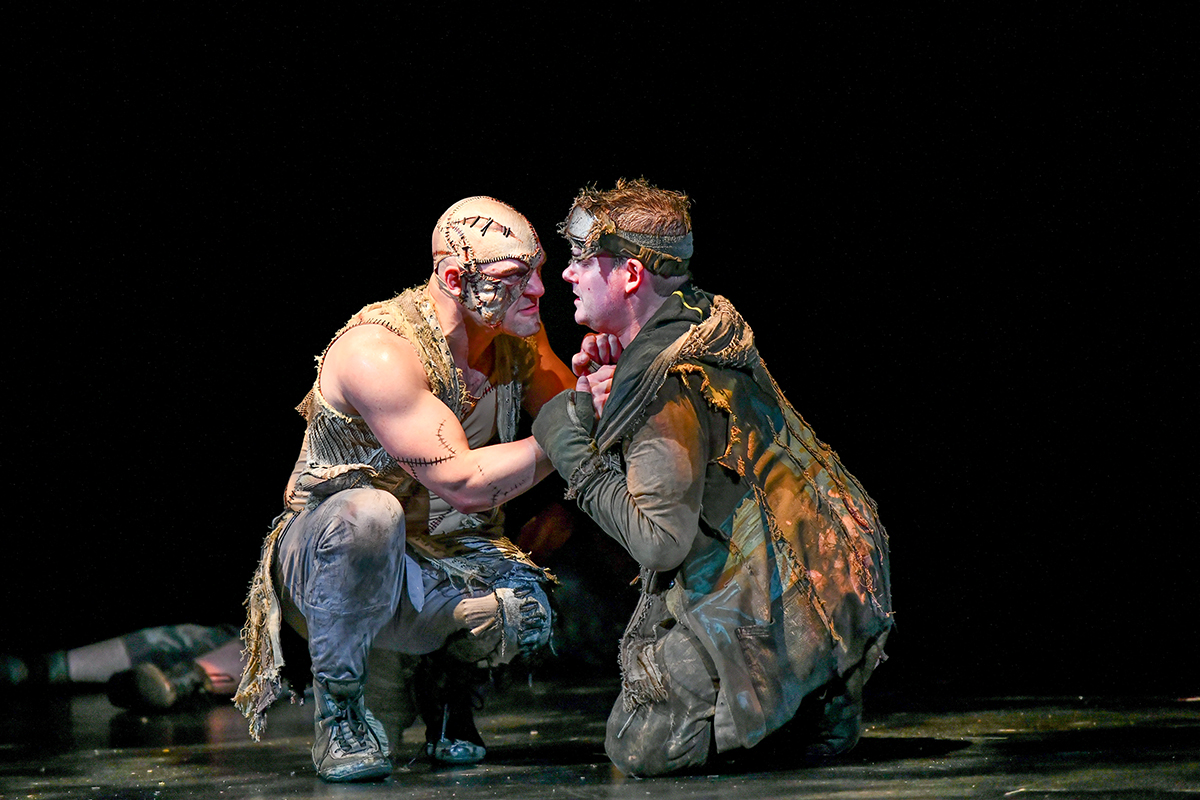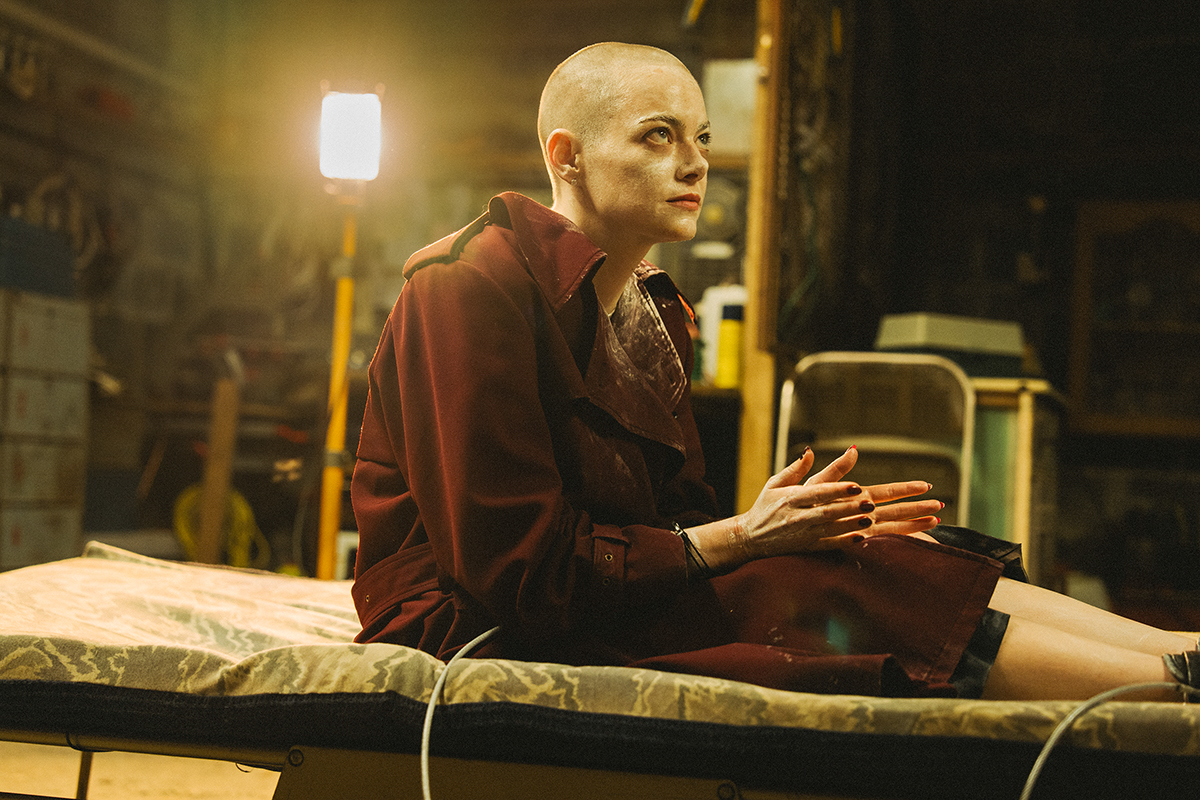Frankenstein Review: Del Toro’s Creation Fails to Come Alive
Guillermo del Toro's sumptuous "Frankenstein" looks fantastic while lurching along like a ship trapped in ice.

The amazing Oscar Isaac can produce magic on-camera, but the actor’s overripe performance in Guillermo del Toro’s Frankenstein fails to cast a spell.
Stunting his characteristic charisma to portray madly determined scientist Victor Frankenstein, Isaac still wields a brooding intensity and sensuality in the part. Outfitted in plush, body-con Victorian garb, his hair a tumble of curls as Frankenstein rages against his detractors, or feverishly saws parts off corpses, Isaac is ever the movie star.
But he’s also wielding an extravagant “ye olde English” accent, aristocratic edition, that never once convinced me. Gothic horror, especially done to Grand Guignol excess as del Toro aims for here, certainly is no place for timidity. And Isaac’s go-big performance isn’t the only ham being served. Still, it’s hard to get past him sounding like a more over-the-top Vincent Price. That mode works better for Charles Dance, portraying Baron Leopold Frankenstein, Victor’s demanding, emotionally distant father, in flashbacks to the scientist’s sad childhood.
Del Toro also scripted this Netflix-produced adaptation of Mary Shelley’s classic Frankenstein; or The Modern Prometheus, retaining the book’s three-volume structure. So we witness Victor’s Tale of growing up a lonely lad (Christian Convery) of 19th-century privilege, deprived of his father’s affection, or, seemingly, any affection, after his mother dies in childbirth. She leaves Victor and his baby brother William utterly bereft.
His father’s only attempt at comfort — telling the boy, “No one can conquer death” — instead becomes a challenge, as the boy becomes a single-minded scientist convinced of his own genius. Conducting experiments in an imposing Gothic tower overlooking stormy seas, Victor seeks to conquer death, and he succeeds.

Thus, we also hear the Creature’s Tale, anchored by Jacob Elordi’s compellingly tormented take on Frankenstein’s monster. “Assembled from the refuse of the discarded dead,” as the Creature artfully puts it, and looking like the giant, ghostly pale alien Engineers of Ridley Scott’s Prometheus sheathed in a dark hood and scarf, the monster stalks his maker around the globe, after a dramatic falling out.
He finds him in the frozen north, where the film actually begins in a prelude set largely aboard the exploring ship Horisont attempting passage to the North Pole. While struggling through thick ice, the ship’s crew, led by gruff Captain Anderson (Lars Mikkelsen), discovers Victor unconscious in the snow and takes him on board.
Offering some of the film’s more intriguing action, the prelude sets a lofty standard for the impressive production value on display in the art direction, costumes, craftsmanship, and the movie’s massive scale. The Horisont exists onscreen as a grand old vessel, which really drives home the impact of seeing the Creature, furious and ferociously strong, rocking the entire ship with violence enough to toss men overboard.
The breathtaking gorgeousness of the production design and costumes never lets up, especially once Mia Goth swans into frame during Victor’s Tale as Elizabeth, the haughty fiancée of little brother William (Felix Kammerer).
The thrill of the action does let up considerably, though, also during Victor’s Tale, often bogged down by the uninspired clashes between Victor and Elizabeth. Prone to fits of pique that neither Goth’s performance nor the script much accounts for, Elizabeth feels like a character being set up for something, rather than one pursuing her own will and desires.
Christoph Waltz pops by to lend an archly funny air to mysterious arms dealer Harlander, who agrees to fund Frankenstein’s folly, up to a point. Then Harlander’s gone, and with him much of the lightness in the room. From the clothes to the accents, everything’s so heavy here, and slow-paced, painstaking to a stultifying degree.
The horror of it all — vivid glimpses of flesh, bone, and viscera in Victor’s gruesome process of carving up corpses — wakes up the proceedings but adds little to the low-ebb momentum, even once the stronger Creature’s Tale takes over.
Save for a harrowing CGI wolf attack, the concluding chapter doesn’t recover the transporting sense of wonder of the prelude, but it does offer a more persuasive protagonist in Elordi’s tortured Creature.
His bold characterization carries the story’s thematic thread that the true monster is the man who believes himself greater than God. The so-called monster emerges the victor here. Odd that the most natural performance in a Frankenstein movie should come from the guy playing the Creature.
Frankenstein (★★☆☆☆) is rated R and now playing in select theaters. It’s available for streaming on Netflix on Nov. 7. Visit fandango.com or netflix.com.
Support Metro Weekly’s Journalism
These are challenging times for news organizations. And yet it’s crucial we stay active and provide vital resources and information to both our local readers and the world. So won’t you please take a moment and consider supporting Metro Weekly with a membership? For as little as $5 a month, you can help ensure Metro Weekly magazine and MetroWeekly.com remain free, viable resources as we provide the best, most diverse, culturally-resonant LGBTQ coverage in both the D.C. region and around the world. Memberships come with exclusive perks and discounts, your own personal digital delivery of each week’s magazine (and an archive), access to our Member's Lounge when it launches this fall, and exclusive members-only items like Metro Weekly Membership Mugs and Tote Bags! Check out all our membership levels here and please join us today!



























You must be logged in to post a comment.